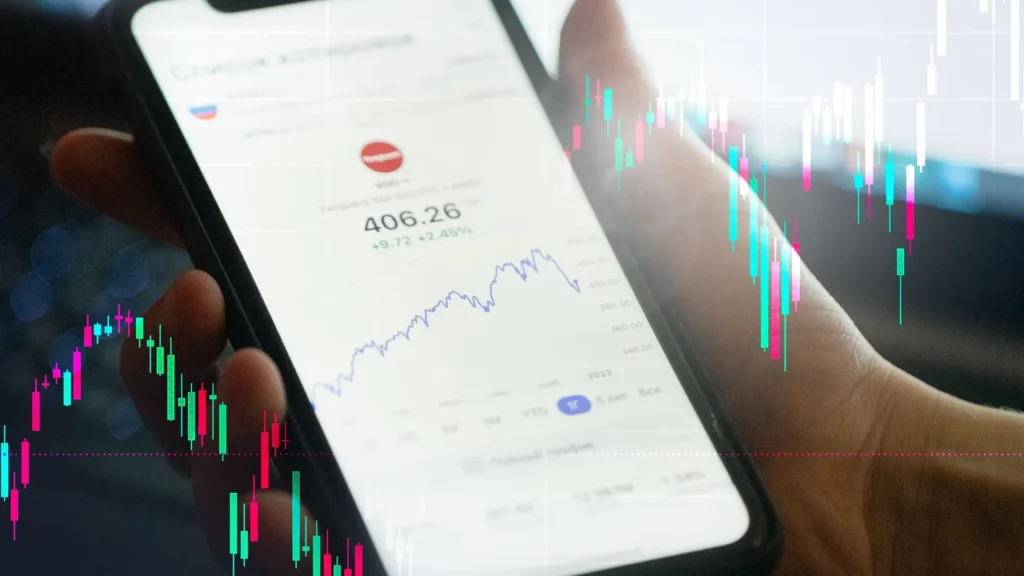In today’s volatile business environment, business risk management has evolved into one of the most critical pillars of corporate sustainability. Whether a company operates in finance, manufacturing, or technology, managing uncertainty effectively determines its long-term success. From market fluctuations to data breaches, natural disasters to regulatory pressures, every enterprise faces unique risks that demand structured prevention and mitigation strategies.
Modern corporations can no longer rely on reactive measures. Instead, they must adopt proactive systems that integrate compliance, insurance, and data-driven decision-making. According to the Harvard Business Review, successful organizations treat risk management as a competitive advantage—anticipating challenges before they disrupt operations or reputation.
Understanding Business Risk Management
Business risk management is the process of identifying, analyzing, and responding to potential threats that may impact an organization’s performance, assets, or reputation. It provides a structured approach to safeguard a company’s value chain from uncertainty while ensuring regulatory and operational continuity.
Key Objectives of Risk Management
- Asset Protection: Safeguarding intellectual property, physical resources, and data assets from loss or misuse.
- Operational Continuity: Ensuring that core functions can continue despite disruptions such as cyberattacks or supply chain issues.
- Regulatory Compliance: Meeting national and international laws to prevent legal penalties or reputational damage.
- Strategic Decision Support: Using risk intelligence to guide investments, partnerships, and expansion strategies.
Identifying and Assessing Corporate Risks
Identifying risks is the foundation of effective business risk management. Organizations typically begin by classifying risks into categories such as strategic, operational, financial, reputational, and compliance-related. This classification helps leadership allocate resources efficiently and prioritize mitigation efforts.
The Risk Identification Process
Corporations use multiple techniques to uncover potential risks:
- SWOT Analysis: Evaluating strengths, weaknesses, opportunities, and threats in the business environment.
- Scenario Planning: Creating “what-if” simulations to test resilience against market or regulatory shifts.
- Internal Audits and Controls: Reviewing workflows and financial procedures to identify weaknesses.
- Predictive Analytics: Leveraging artificial intelligence to detect anomalies and forecast emerging threats.
Risk Assessment and Prioritization
Once identified, risks must be analyzed in terms of their probability and potential impact. A typical assessment model uses a matrix to visualize which risks require immediate attention.
| Risk Category | Probability | Impact | Priority |
|---|---|---|---|
| Cybersecurity Breach | High | Severe | Critical |
| Regulatory Non-Compliance | Medium | High | High |
| Supply Chain Disruption | Low | Medium | Moderate |
| Market Volatility | High | Medium | High |
This matrix allows managers to focus resources where they will deliver the greatest protection to the company’s bottom line.
Mitigation Strategies for Common Business Risks
Once risks are prioritized, corporations must implement tailored mitigation strategies that balance prevention, transfer, and control. A well-designed business risk management framework incorporates flexible responses suitable for both internal and external challenges.
Financial and Operational Risks
Financial instability, currency fluctuations, and supply chain disruptions can threaten profitability. Mitigation strategies include diversification of suppliers, use of financial hedging instruments, and maintaining healthy cash reserves. Digital transformation tools such as enterprise resource planning (ERP) systems also enhance visibility and control across operations.
Strategic and Reputational Risks
Public perception can make or break a company. Strategic errors or ethical lapses can quickly evolve into crises amplified by social media. To mitigate these risks, organizations should establish transparent communication channels, monitor public sentiment, and maintain consistent corporate ethics. A predefined crisis communication plan helps minimize damage during incidents.
Compliance and Regulatory Risks
Legal and regulatory breaches can result in substantial financial and reputational loss. Robust compliance frameworks ensure that all departments adhere to applicable laws, from data privacy to environmental standards. Regular internal audits, whistleblower systems, and training programs reinforce accountability and prevent violations before they occur.
Insurance as a Risk Transfer Tool
While prevention is ideal, some risks must be transferred rather than eliminated. Insurance plays a crucial role in business risk management by mitigating the financial impact of unforeseen events. Corporations typically maintain a mix of insurance policies, including property, liability, professional indemnity, and cyber coverage.
- Property Insurance: Protects facilities and equipment from fire, theft, or natural disasters.
- Liability Insurance: Covers third-party claims arising from negligence or product defects.
- Business Interruption Insurance: Compensates for revenue loss during temporary shutdowns.
- Cyber Insurance: Shields against data breaches, ransomware attacks, and digital extortion.
Choosing appropriate coverage requires aligning insurance plans with operational realities. Businesses that regularly review policies alongside their evolving risk profiles ensure better resilience in uncertain markets.

Building a Risk-Aware Corporate Culture
Even the most sophisticated business risk management frameworks will fail without the right culture. A resilient organization fosters risk awareness at every level, from boardroom strategy sessions to daily operational decisions. Risk management must be embedded into the company’s DNA—not treated as a separate compliance exercise.
Governance and Leadership
Senior leadership sets the tone for how seriously risks are managed. The board of directors and executive committees are responsible for defining the company’s risk appetite and ensuring proper oversight. Many global corporations now establish Enterprise Risk Management (ERM) teams that report directly to the CEO or CFO, ensuring continuous monitoring of financial, operational, and strategic exposures.
Employee Engagement and Training
Every employee has a role in minimizing risk. Regular workshops and e-learning modules help staff recognize red flags in areas such as cybersecurity, compliance, and data handling. Encouraging employees to report concerns without fear of retaliation promotes transparency and prevents small issues from becoming major incidents.
Leveraging Technology in Business Risk Management
Digital transformation is reshaping the landscape of business risk management. Technology enables real-time monitoring, predictive analysis, and faster response times, making risk oversight far more dynamic than traditional manual systems.
Digital Tools for Risk Monitoring
- Artificial Intelligence (AI): AI-driven analytics detect unusual patterns in transactions, logistics, or system performance that may indicate emerging risks.
- Internet of Things (IoT): Connected sensors track environmental factors—such as temperature or vibration—to prevent equipment failure in manufacturing or logistics.
- Predictive Dashboards: These visualize live data across departments, allowing decision-makers to intervene before a disruption escalates.
Cybersecurity as a Core Priority
As companies increasingly rely on digital infrastructure, cybersecurity becomes central to business risk management. Cyber threats can result in severe operational downtime and regulatory penalties. Implementing multi-factor authentication, data encryption, and regular vulnerability assessments helps minimize exposure. Complementing these controls with insurance coverage specifically designed for cyber incidents ensures financial protection against potential losses.
Case Studies: Best Practices from Leading Corporations
Several leading companies illustrate how effective business risk management can secure both reputation and profitability:
1. Financial Sector – Automated Compliance Systems
A multinational bank implemented AI-driven regulatory monitoring to track policy updates across multiple jurisdictions. This automation reduced human error, improved compliance accuracy, and saved millions annually in potential fines.
2. Manufacturing Sector – Integrated Insurance Framework
A global manufacturer adopted a unified insurance policy combining property, business interruption, and liability coverage. This holistic approach streamlined claims management and strengthened the company’s resilience during a major supply chain disruption.
3. Technology Sector – Proactive Cyber Defense
A tech firm leveraged predictive analytics and real-time alerts to detect suspicious activities across its network. Continuous employee training and layered security measures significantly reduced phishing incidents and data breaches.
Emerging Trends in Business Risk Management
The future of business risk management will be shaped by technological innovation, sustainability, and global cooperation. Companies are now expected to disclose their climate-related risks, aligning with frameworks such as the Task Force on Climate-Related Financial Disclosures (TCFD). Integrating environmental, social, and governance (ESG) principles into corporate strategy is becoming essential to both investors and regulators.
Artificial intelligence will continue to automate routine risk assessments, while blockchain enhances transparency in compliance and auditing processes. Meanwhile, data-driven insurance underwriting will allow customized coverage based on real-time company performance rather than static risk profiles.
Future Outlook: Building Resilient Enterprises
In the coming decade, resilience will define successful organizations. Firms that adapt their business risk management practices to address global disruptions—from pandemics to geopolitical instability—will gain a sustainable edge. Cross-department collaboration, ethical leadership, and a forward-looking culture will remain essential for mitigating complex risks.
Ultimately, effective risk management is not about eliminating uncertainty—it’s about transforming it into opportunity. By combining prevention, compliance, and strategic insurance planning, modern corporations can thrive amid volatility and build trust with stakeholders.
Conclusion
Robust business risk management is no longer optional—it’s a cornerstone of modern corporate governance. Through continuous risk identification, smart mitigation, and adaptive culture, companies can protect their assets while fostering innovation. The integration of compliance, insurance, and advanced technology provides a sustainable framework for navigating future challenges.
As global markets evolve, the most successful corporations will be those that view risk not as a threat, but as a catalyst for smarter strategy, stronger leadership, and lasting growth.



